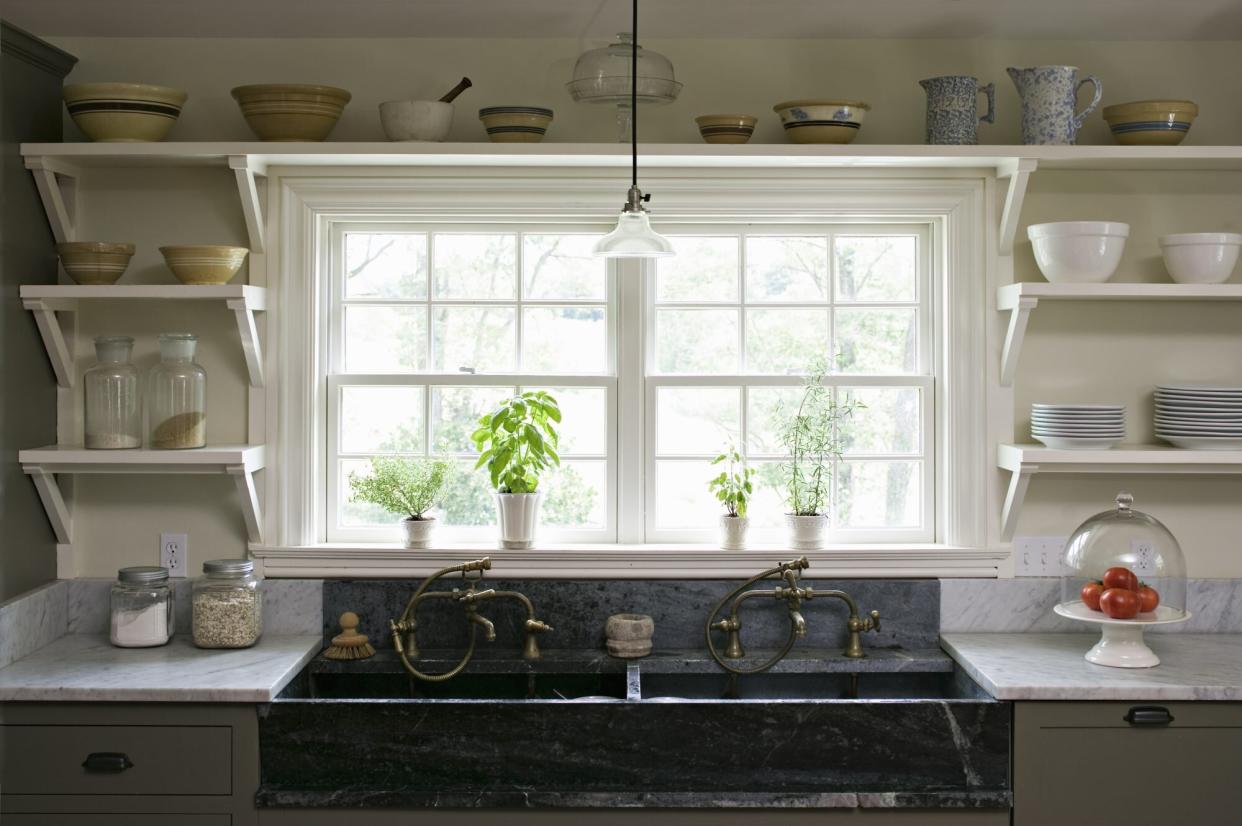How to Clean Your Garbage Disposal—and Keep the Drain Fresh Using Lemon Peels

Getty Images
TABLE OF CONTENTS
On This Page
Cleaning Frequency
General Cleaning
Deep Cleaning
Clearing Clogs and Debris
Maintenance
Believe it or not, one of the most common sources of odor in your kitchen is the garbage disposal. This home appliance is full of nooks and crannies where leftover bits of food and kitchen waste can become lodged, prompting all sorts of unpleasant smells. Fortunately, cleaning your garbage disposal is easier than you might imagine—and can be done using common household items, like vinegar, baking soda, and lemons.
Related: How to Deep Clean Your Kitchen Sink
How Often You Should Clean Your Garbage Disposal
While it may seem like your garbage disposal cleans itself, considering how much soapy water runs down your drain, it's still important to clean it about once a month, says Jill Koch, expert organizer and cleaner with Jill Comes Clean. The reason? Small food particles often get stuck—and as they begin to rot, they smell and become a breeding ground for bacteria.
How to Clean Your Garbage Disposal
Cleaning your garbage disposal should be a simple, cost efficient project, since most of the ingredients you need are likely already in your pantry, says Richard Coleman, the president of Coleman's A/C Heating & Appliance Repair.
What You'll Need
Baking soda
Vinegar
Lemon peels
After you've gathered your supplies, follow these steps to clean your garbage disposal:
Sprinkle a 1/2 cup of baking soda down the drain followed by 1 cup of vinegar; let it bubble for about a minute, says Coleman.
Flush the drain with hot water.
"To keep your garbage disposal fresh throughout the week, take some lemon peels and let the disposal grind them up; then, rinse with hot water," he says, adding that ice and dish detergent make handy alternatives.
What Not to Use
Avoid using harsh ingredients when cleaning your garbage disposal, says Koch. "Be careful with some chemical cleaners; using them in the disposal can corrode the metal," she says, adding that more often than not, these DIY recipes are best.
How to Deep-Clean Your Garbage Disposal
Some food particles and odors can be more stubborn, which is why deeper cleans are often necessary, says Alicia Sokolowski, the president and co-CEO of AspenClean. She suggests having oxygen bleach powder on hand for this task.
Safety first: Turn off your garbage disposal's electrical source. "Either pull the plug (typically connected to an outlet under the sink) or turn off the electricity from the breaker box," Sokolowski says. Always double-check that the electric is off before you deep-clean your garbage disposal.
Tackle areas with gunk buildup, then clean the splash guard with a sponge and some natural dish soap, Sokolowski says. Get rid of any food particles you see.
Pour a 1/2 cup of the powder bleach mixed with a 1/2 cup of hot water into the disposal. Flush with hot water again. The bleach deodorizes the garbage disposal, Sokolowski explains.
How to Clear Clogs or Stuck Debris
If any particles stay stuck, grab an old toothbrush or skinny scrub brush, suggests Koch. Rinsing with boiling water can also help clear blockages. "That method is often all you need—however, if it's been a while, or you have strong odors present in the disposal, you might want to add in the additional step of ice, salt, and dish soap," she says.
Pour 1 cup of ice into the disposal and drizzle in some dish soap; add in a 1/2 cup of salt.
Run cold water on top, then turn on the disposal. Let it run until it sounds like the ice has cleared. "This combination helps scrub the blades (they are actually more like grinding teeth than blades) and will break up any stuck-on food and debris," says Koch.
How to Maintain Your Garbage Disposal
If you want to keep your garbage disposal cleaner for longer, adjust the temperature of your tap water, says Sokolowski. For the best results, only run the appliance while using cold water, since cooler temperatures help solidify most kitchen waste—making it easier for the disposal to grind it up and pass it through the mechanism.

